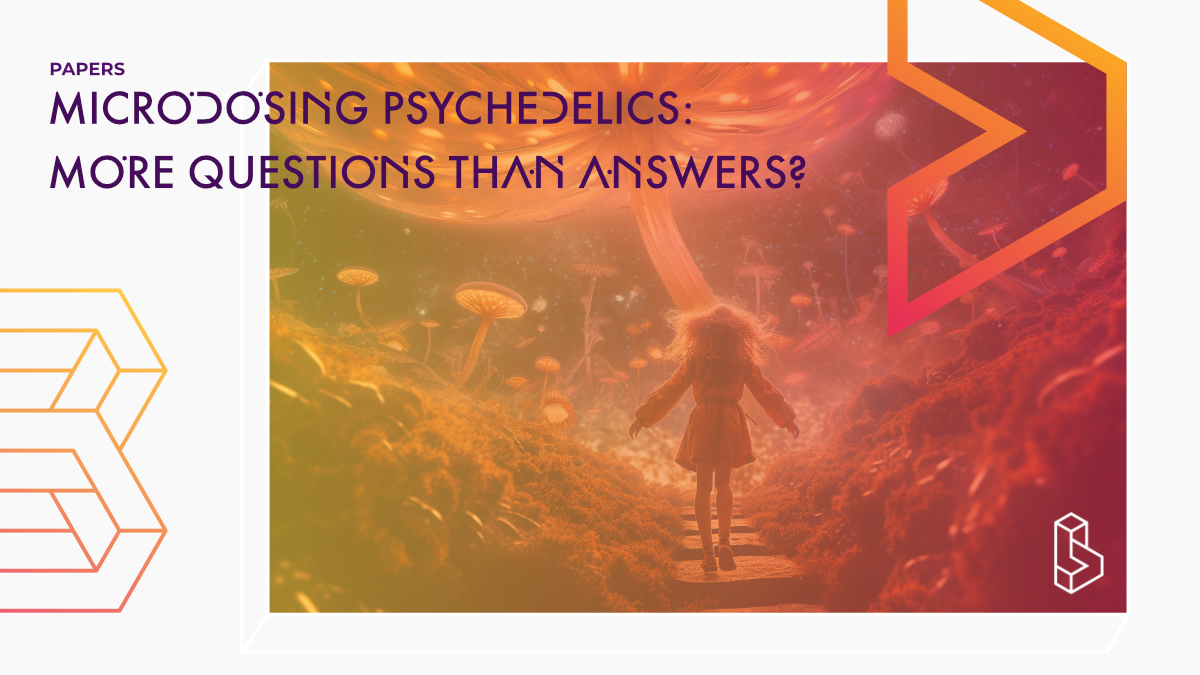We don’t know much about the effects of microdosing or have even defined it rigorously. Kuypers and colleagues (2019) ask the questions and take the first step in building a framework for a more scientific microdosing study. Microdosing is defined as the 1) use of a low dose below the perceptual threshold that does not impair ‘normal’ functioning of an individual, 2) a procedure that includes multiple dosing sessions, and 3) with the intention to improve well-being and enhance cognitive and emotional processes.
Abstract of Microdosing Psychedelics
“Background: In the past few years, the issue of ‘microdosing’ psychedelics has been openly discussed in the public arena where claims have been made about their positive effect on mood state and cognitive processes such as concentration. However, there are very few scientific studies that have specifically addressed this issue, and there is no agreed scientific consensus on what microdosing is.
Aim: This critique paper is designed to address questions that need to be answered by future scientific studies and to offer guidelines for these studies.
Approach: Owing to its proximity for a possible approval in clinical use and short-lasting pharmacokinetics, our focus is predominantly on psilocybin. Psilocybin is allegedly, next to lysergic acid diethylamide (LSD), one of the two most frequently used psychedelics to microdose. Where relevant and available, data for other psychedelic drugs are also mentioned.
Conclusion: It is concluded that while most anecdotal reports focus on the positive experiences with microdosing, future research should also focus on potential risks of (multiple) administrations of a psychedelic in low doses. To that end, (pre)clinical studies including biological (e.g. heart rate, receptor turnover and occupancy) as well as cognitive (e.g. memory, attention) parameters have to be conducted and will shed light on the potential negative consequences microdosing could have.
Authors: Kim P. C. Kuypers, Livia Ng, David Erritzoe, Gitte M. Knudsen, Charles D. Nichols, David E. Nichols, Luca Pani, Anaïs Soula & David J. Nutt
Summary of Microdosing Psychedelics
Psychedelics are psychoactive substances that induce complex behavioural, psychological and physiological effects. The following review focuses on psilocybin, which is allegedly most frequently used to microdose, and offers guidelines for future scientific studies.
As early as the 16th century, low doses of psilocybin were used medically to treat fevers and rheumatism. However, by 1640, 94% of the Aztec population was wiped out and with them, the traditions involving ‘teonanacatl’.
Find this paper
https://doi.org/10.1177/0269881119857204
Open Access | Google Scholar | Backup | 🕊
Cite this paper (APA)
Kuypers, K. P., Ng, L., Erritzoe, D., Knudsen, G. M., Nichols, C. D., Nichols, D. E., ... & Nutt, D. (2019). Microdosing psychedelics: More questions than answers? An overview and suggestions for future research. Journal of Psychopharmacology, 33(9), 1039-1057.
Study details
Compounds studied
LSD
Psilocybin
Topics studied
Microdosing
Study characteristics
Commentary

